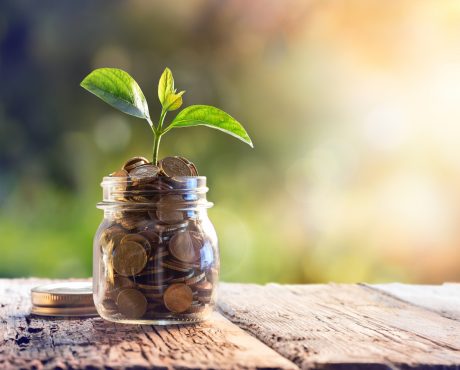Unlock the Power of Compounding
The stock market is firing on all cylinders. Thanks to better-than-expected corporate earnings, many companies are enjoying new all-time highs in their share prices.
Growth has been seen across the board. America’s large-cap stocks advanced 18% over the last 12 months. Small-cap stocks in the U.S. performed even better, gaining an average 22.8% during this period. If you have a well-diversified portfolio of U.S. equities, there’s a good chance that you see a sizable increase in the value of your investments.
Share price appreciation is always nice, but it shouldn’t be the only focus. As income investors, the goal of an equity portfolio is to generate a steady and (hopefully) increasing stream of income, regardless of market movements.
Today, I would like to talk about a strategy that can substantially increase the return of a dividend portfolio over time. As you are about to see, investors who used this strategy have become some of the biggest winners.
Let’s take a look at Johnson & Johnson (NYSE:JNJ), one of our favorite companies here at Income Investors. JNJ stock surged 15.7% over the last 12 months, which is pretty impressive given that it is a mega-cap stock commanding over $350.0 billion in market cap. But that double-digit increase in share price is nothing compared to what the company has delivered in the long term.
Suppose an investor purchased 100 shares of JNJ stock on the first trading day in 1972; it would have cost them $9,775.00 at the time. If the investor collected the dividends and held on to their shares to this day, their investment would have grown to 4,800 shares, thanks to all of the company’s stock splits over the years. The market value of their investment today is $656,784.00, for a return of 6,619.02%. (Source: “Investment Calculator,” Johnson & Johnson, last accessed October 13, 2017.)
Now, what if the investor decided to reinvest the dividends instead of collecting them?
Well, those 100 shares of Johnson & Johnson would have turned into 7,948 shares after stock splits and dividend reinvestment, or 3,148 shares more than what the investor would have if they chose to collect the dividends. The market value of their investment, with reinvested dividends, is at a whopping $1,087,608.53 at the current price, translating to a total return of 11,026.43%.
Each dividend payment on that initial 100 shares of JNJ stock may not be that much. But with growing dividends and rising share prices, dividend reinvesting allowed the investor to unlock the power of compounding, generating an extra 4,407.41% return over the 45-year period.
Of course, we can’t go back in time and purchase 100 shares of Johnson & Johnson stock on January 3, 1972. But what we can do is find solid dividend-paying companies and reinvest their dividends.
The dividend reinvestment strategy is incredibly easy to implement. Obviously, an investor can take the dividends and reinvest it all themselves. But if you want to automate the process and put your portfolio on cruise control, there are two convenient ways to help you reinvest your dividends.
The first one is to enroll in a dividend reinvestment plan (DRIP) offered by a dividend-paying company. When an investor signs up for a company DRIP, they no longer receive the dividends in cash. Instead, the payout is automatically used to buy additional shares of the company, usually on the dividend payment date.
However, not all companies offer a dividend reinvestment plan. And some companies also charge an enrollment fee, then another transaction fee when investors sell shares purchased under the plan. In situations where company DRIPs are not available or are too expensive, investors may want to consider another way to reinvest their dividends: through a brokerage.
Again, not all brokers offer a dividend reinvestment plan. But those that do often allow investors to reinvest their dividends commission-free. It also allows investors to use the strategy on multiple stocks in their portfolios without having to sign up for each company’s DRIP. Whichever way you choose to go, reinvesting dividends using a low-cost company DRIP or broker DRIP can provide a convenient and automatic way to unlock the power of compounding.
